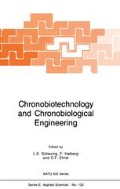Abstract
The major impetus for an interest in blood pressure readings, obtained either conventionally or by automated equipment, has been a need to better understand and to more accurately diagnose clinical high blood pressure states. Hypertension is a common chronic condition that may affect up to 25% of the adult population. The major importance of this condition is that it is a risk factor for premature cardiovascular disease, especially strokes and heart attacks (1). It has been demonstrated that treatment of high blood pressure by pharmacologic methods decreases the incidence of these major complications and probably prolongs life (2). Thus, there has been a strong incentive to identify individuals with high blood pressure and to provide them with appropriate therapy.
Access this chapter
Tax calculation will be finalised at checkout
Purchases are for personal use only
Preview
Unable to display preview. Download preview PDF.
References
Kannel WB, Castelli WP, McNamara PM, Sorlie P: Some factors affecting morbidity and mortality in hypertension. The Framingham Study. Milbank Mem Fund Q, 47: 116–142, 1969.
Hypertension Detection and Follow-Up Program Cooperative Group. Five-year findings of the hypertension detection and follow-up program. I. Reduction of mortality in persons with high blood pressure, including mild hypertension. JAMA 242: 2562–2571, 1979.
Joint National Committee on Detection, Evaluation, and Treatment of High Blood Pressure. Arch Intern Med 144: 1045–1057, 1984.
Report by the Management Committee. The Australian therapeutic trial in mild hypertension. Lancet 1: 1261–1267, 1980.
Drayer JIM, Weber MA: Monotherapy of essential hypertension with a converting enzyme inhibitor. Hypertension 5: 108–113, 1983.
Finnerty FA, Jr.: Step-down treatment of mild systemic hypertension. Am J Cardiol 53: 1304–1307, 1984.
Gould BA, Hornung RS, Kieso HA, Altman DG, Cashman PMM, Raftery EB: Evaluation of the Remler M2000 blood pressure recorder. Comparison with intra-arterial blood pressure recordings both at hospital and at home. Hypertension 6: 209, 1984.
Weber MA, Drayer JIM, Wyle FA, DeYoung JL: Reproducibility of the whole-day blood pressure pattern in essential hypertension. Clin Exp Hypertension A4: 1377–1390, 1982.
Weber MA, Drayer JIM, Wyle FA, Brewer DD: A representative value for the whole-day blood pressure. JAMA 248: 1626–1628, 1982.
Weber MA, Drayer JIM, Nakamure DK, Wyle FA: The circadian blood pressure pattern in ambulatory normal subjects. Am J Cardiol 54: 115–119, 1984.
Drayer JIM, Weber MA, Nakamura DK: Automated ambulatory blood pressure monitoring: a study in age-matched normotensive and hypertensive men. Am Heart J 109: 1334–1338, 1985.
Drayer JIM, Weber MA, De Young JL, Wyle FA: Circadian blood pressure patterns in ambulatory hypertensive patients. Am J Med 73: 493–499, 1982.
Drayer JIM, Weber MA, De Young JL: Blood pressure as a determinant of cardiac left ventricular muscle mass. Archives Int Med 143: 90–92, 1982.
Drayer JIM, Weber MA: Definition of normalcy in whole-day ambulatory blood pressure monitoring. A7: 195–204, 1985.
Halberg F, Drayer JIM, Cornelissen G, Weber MA: Cardiovascular reference data base for recognizing circadian mesor- and amplitude-hypertension in apparently healthy men. Chronobiologia 11: 275–341, 1984.
Drayer JIM, Weber MA, De Young JL, Brewer DD: Long-term blood pressure monitoring in the evaluation of antihypertensive therapy. Archives Int Med 143: 898–901, 1983.
Author information
Authors and Affiliations
Editor information
Editors and Affiliations
Rights and permissions
Copyright information
© 1987 Martinus Nijhoff Publishers, Dordrecht
About this chapter
Cite this chapter
Weber, M.A., Drayer, J.I.M., Brewer, D.D. (1987). Repetitive Blood Pressure Measurements: Clinical Issues, Techniques, and Data Analysis. In: Scheving, L.E., Halberg, F., Ehret, C.F. (eds) Chronobiotechnology and Chronobiological Engineering. NATO ASI Series, vol 120. Springer, Dordrecht. https://doi.org/10.1007/978-94-009-3547-1_21
Download citation
DOI: https://doi.org/10.1007/978-94-009-3547-1_21
Publisher Name: Springer, Dordrecht
Print ISBN: 978-94-010-8086-6
Online ISBN: 978-94-009-3547-1
eBook Packages: Springer Book Archive

